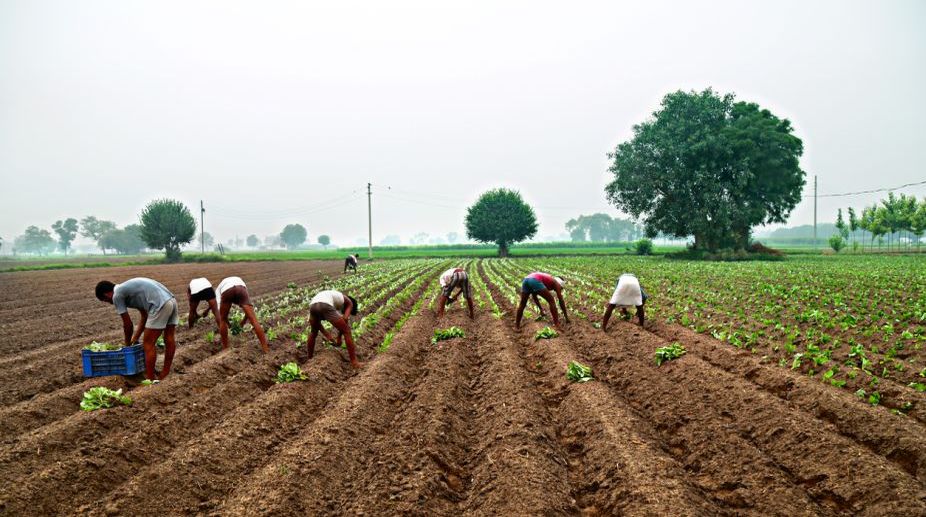Farmers from different states on Thursday presented their first-hand experiences on how rapeseed-mustard yields can be boosted substantially by deploying simple, safe and sustainable methods.
These farmers from Bihar, Madhya Pradesh, Odisha and Rajasthan, at a press conference organised by the Alliance for Sustainable and Holistic Agriculture (ASHA), explained how the average yields by practising agro-ecology based System of Mustard Intensification (SMI) were significantly higher than their conventional yields or of other farmers.
Advertisement
This system is also called as System of Crop Intensification (SCI) or System of Root Intensification (SRI).
Advertisement
According to data collected by ASHA, the best yield with SMI method in a farmer’s field was in a Madhya Pradesh government extension programme.
“There was a production of 5,728 kg/ha in Umaria district during commercial cultivation of Brassica carinata surpassing the average yields of farmers in the region,” said Rajesh Tripathi, Deputy Director Agriculture, Balaghat, Madhya Pradesh.
He said the government’s SMI yields were reported as 4,693 kg/ha on an average from four villages of Umaria district. Compared to their conventional yields (baseline), farmers had experienced a three-fold increase.
“It is important to note that SMI has been proven to be equally successful in its yield-enhancing capabilities across different species of rapeseed-mustard (B. carinata, B. rapa as well as B. juncea),” Kavitha Kuruganti from ASHA explained.
Felicita Topno, a 46-year-old SMI farmer from Odisha, said: “I find two important benefits from adopting SMI practices in my mustard cultivation — one, reduction in the use of inputs… this means saving on costs.”
“Secondly, I also have higher yields from adopting SMI. The yields increase anywhere between 50 per cent and 100 per cent from what I used to get or what other farmers get on an average.”
She explained that this system requires taking up transplanting of rapeseed seedlings using wider spacing between the seedlings.
“While seeds were initially supplied, this method does not require me to buy seeds from any external agency season after season as we built our own seed stocks. There is also no use of chemical fertilisers, further saving costs,” she said.
Hukam Singh Lodha, a farmer from Rajasthan who is also a breeder, shared information on the Sitara Sringar variety that he developed in 2010 through natural crossing of Brassica juncea or Sarson with Raphanus sativus or Sengri.
This variety gives yields of 3,000 to 3,500 kilos per hectare with one irrigation, under line sowing, and has 42 per cent oil content.
After obtaining stability of Sitara Sringar, Singh started multiplying seeds in sufficient quantities and has distributed them to farmers in Bharatpur, Dholpur, Alwar and Dausa districts of Rajasthan.
Explaining how the principles of SRI have been incorporated into mustard cultivation, Soumik Banerjee, a biotechnologist from Jharkhand, shared that even line sowing increases yields significantly, while transplanting shows a higher potential.
He averred that enabling resources for poor farmers in different states, seed sovereignty and savings on external inputs were critical.
“The experience of civil society groups shows clearly that what farmers need is an effective extension system,” Banerjee said.
“More research is required within SMI. Even this requires very little investment, which the government ought to make, if it is serious about improving mustard production and yields in the country”, he added.
Advertisement











